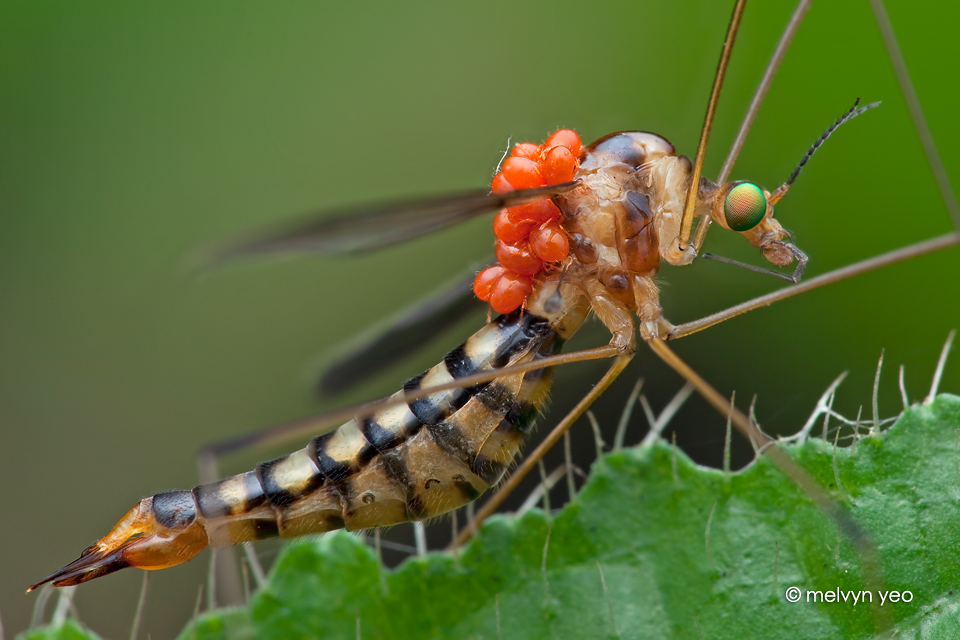ShopDreamUp AI ArtDreamUp
Deviation Actions
Description
Piggyback. Taken at night in Singapore.
Quote from en.wikipedia.org/wiki/Crane_fl…
The crane fly is a member of the family of insects in the order Diptera, the true flies. The true crane flies are most often classified entirely within the family Tipulidae sensu stricto. Alternately, they are defined as the superfamily Tipuloidea, which includes the Tipulidae and a few other families.
Numerous other common names have been applied to the crane fly. Many of the names are more or less regional in the US, including mosquito hawk, mosquito eater, gallinipper, and gollywhopper.[2] They are also known as daddy-long-legs in the UK[3] - not to be confused with daddy-long-legs (American English) that refers to arachnids of the order Opiliones or the family Pholcidae. The larvae of crane flies are known commonly as leatherjackets.[3]
Crane flies are widely distributed in general, though individual species usually have limited ranges. They are most diverse in the tropics, and are also common in northern latitudes and high elevations.
The adult crane fly has a slender body and stilt-like legs that are deciduous, easily coming off the body. The wingspan is generally about 1 to 6.5 centimeters. The antennae have up to 39 segments.[3] It is also characterized by a V-shaped suture on the back of the thorax and by its wing venation.[4] The rostrum is long; in some species it is as long as the head and thorax together.[5]
The adult female usually contains mature eggs as she emerges from her pupa, and often mates immediately if a male is available. Males also search for females by walking or flying. Copulation takes a few minutes to hours and may be accomplished in flight. The female immediately oviposits, usually in wet soil or mats of algae. Some lay eggs on the surface of a water body or in dry soils, and some reportedly simply drop them in flight. Most crane fly eggs are black in color. They often have a filament, which may help anchor the egg in wet or aquatic environments.[6]
Crane fly larvae (leatherjackets) have been observed in many habitat types on dry land and in water,[6] including marine, brackish, and fresh water.[5] They are cylindrical in shape but taper toward the front end, and the head capsule is often retracted into the thorax. The abdomen may be smooth, lined with hairs, or studded with projections or welt-like spots. There may be projections around the spiracles.[5] Larvae may eat algae, microflora, and living or decomposing plant matter, including wood. Some are predatory.[6]
Quote from en.wikipedia.org/wiki/Crane_fl…
The crane fly is a member of the family of insects in the order Diptera, the true flies. The true crane flies are most often classified entirely within the family Tipulidae sensu stricto. Alternately, they are defined as the superfamily Tipuloidea, which includes the Tipulidae and a few other families.
Numerous other common names have been applied to the crane fly. Many of the names are more or less regional in the US, including mosquito hawk, mosquito eater, gallinipper, and gollywhopper.[2] They are also known as daddy-long-legs in the UK[3] - not to be confused with daddy-long-legs (American English) that refers to arachnids of the order Opiliones or the family Pholcidae. The larvae of crane flies are known commonly as leatherjackets.[3]
Crane flies are widely distributed in general, though individual species usually have limited ranges. They are most diverse in the tropics, and are also common in northern latitudes and high elevations.
The adult crane fly has a slender body and stilt-like legs that are deciduous, easily coming off the body. The wingspan is generally about 1 to 6.5 centimeters. The antennae have up to 39 segments.[3] It is also characterized by a V-shaped suture on the back of the thorax and by its wing venation.[4] The rostrum is long; in some species it is as long as the head and thorax together.[5]
The adult female usually contains mature eggs as she emerges from her pupa, and often mates immediately if a male is available. Males also search for females by walking or flying. Copulation takes a few minutes to hours and may be accomplished in flight. The female immediately oviposits, usually in wet soil or mats of algae. Some lay eggs on the surface of a water body or in dry soils, and some reportedly simply drop them in flight. Most crane fly eggs are black in color. They often have a filament, which may help anchor the egg in wet or aquatic environments.[6]
Crane fly larvae (leatherjackets) have been observed in many habitat types on dry land and in water,[6] including marine, brackish, and fresh water.[5] They are cylindrical in shape but taper toward the front end, and the head capsule is often retracted into the thorax. The abdomen may be smooth, lined with hairs, or studded with projections or welt-like spots. There may be projections around the spiracles.[5] Larvae may eat algae, microflora, and living or decomposing plant matter, including wood. Some are predatory.[6]
Image size
960x640px 397.44 KB
Make
Canon
Model
Canon EOS 5D Mark II
Shutter Speed
1/160 second
Aperture
F/16.0
Focal Length
100 mm
ISO Speed
125
Date Taken
Dec 14, 2013, 12:48:01 AM
Sensor Size
6mm
© 2014 - 2024 melvynyeo
Comments15
Join the community to add your comment. Already a deviant? Log In
In England it's called a daddy longlegs, but I grew up calling it a galley nipper (still do). And April is their month, so they're all over the place. I wish they were around all year.

































